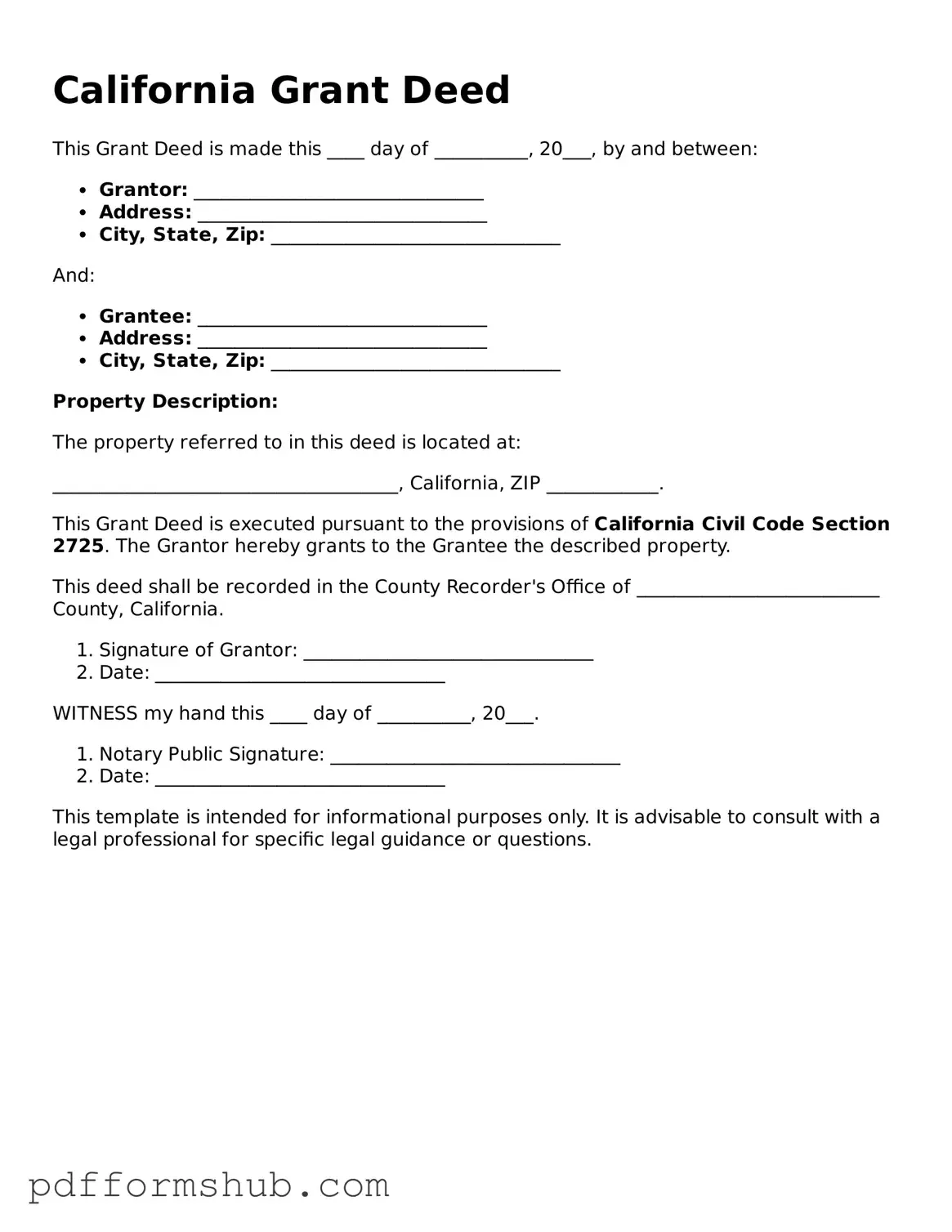In California, the deed form serves as a crucial document in the transfer of property ownership. This legal instrument not only identifies the parties involved—typically the grantor, or seller, and the grantee, or buyer—but also details the specific property being conveyed. The form requires accurate descriptions of the property, often including boundaries and any relevant parcel numbers to ensure clarity. Additionally, the deed must be signed by the grantor, and in some cases, notarization is necessary to validate the transaction. California recognizes various types of deeds, including grant deeds and quitclaim deeds, each serving different purposes and offering varying levels of protection to the buyer. Understanding the nuances of these forms is essential for anyone involved in real estate transactions, as they lay the foundation for legal ownership and rights associated with the property. Furthermore, ensuring compliance with state laws and local regulations is vital to avoid potential disputes or complications in the future.
